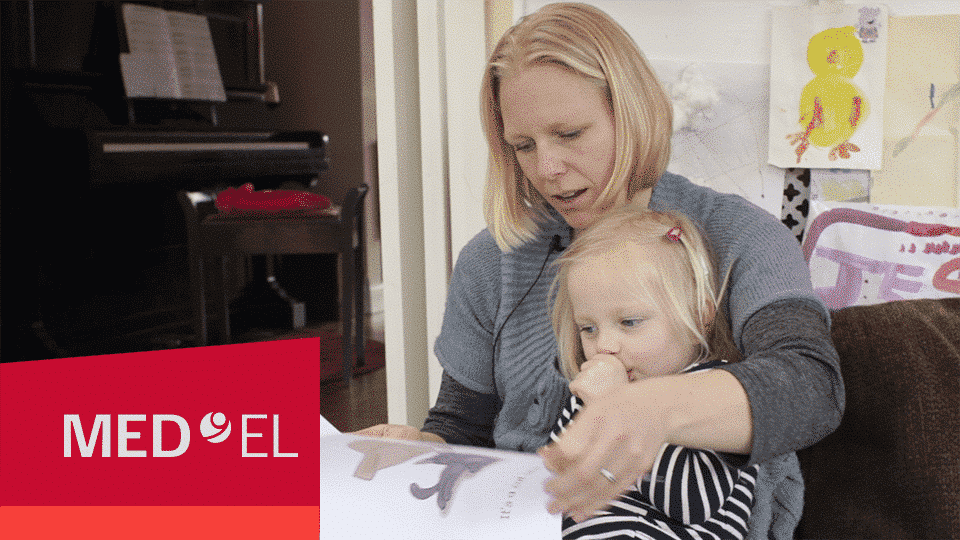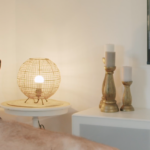MED-EL
Published May 01, 2019
Rehab At Home: How Can I Use Problems To Teach My Child New Language?

Today’s Rehab At Home post is about using small, daily problems that come up at home to teach your child new language.
We’re going to look more at how we can identify opportunities that arise during everyday life and explain some simple ways you can use these moments to help your child learn new language.
What Problems Can I Use?
Small problems come up all the time. Situations such as spilt drinks, missing shoes, clothes accidentally being put on inside out, or getting caught in the rain can all be turned into language learning opportunities.
Why Is This Important?
As a parent, you are wired to take care of your baby’s every need. You instinctively know what your child needs and wants, sometimes before they even need to ask for it. But as children grow, they learn to ask for help and problem solve on their own.
It is important that you support and teach your child to solve problems and ask for help, so that they can become independent in these skills as they begin school.
Children need to learn:
- Words for explaining problems such as broken, spilt, fell down, empty, not working, hurt, gone, finished, won’t/don’t/not/can’t and different
- Words for solving problems such as help, more, fix, open, wait, clean, where and find
How Can I Use Problems To Teach My Child New Language?
When problems or surprises arise at home, take the time to talk them through with your child. Pause and draw your child’s attention to what has happened, and then what you could do to fix it. For example, rather than just turning the light on when going into the bathroom, say: “Oh it’s dark! Hmm, what should we do? We have to turn the light on. Turn the light on. Ok, now the light is on we can see”.
This allows your child to hear and understand your problem-solving process, as well as the language that goes with it.
In this video, Penny’s mother does a fantastic job taking the opportunity to teach her daughter new words around the problem of a ripped page. She pauses and draws Penny’s attention to the problem and uses the new words ‘torn’ and ‘ripped’ to label the problem. She uses acoustic highlighting on these words to draw Penny’s auditory attention to them. Penny’s mum then encourages her to think about how they can solve the problem together.
Here are some other ways you can use problems to teach your child new language:
What Activities Can We Do With Younger Children?
- When a toy, bag, or piece of clothing is missing, search for the missing item with your child. Use this problem to teach your child the question “Where is…?” and action words like “look” and “find”.
- When your child has finished their drink or snack, pause before you give them more. Use this situation to teach your child “it’s finished”, “the cup is empty” and expect them to vocalize or imitate to request “more grapes”.
What Activities Can We Do With Older Children?
Older children can solve many of their small daily problems more independently. Pause and take the time to talk through the problem first. Are they able to come up with ideas about how they can solve the problem?
- There are many problem-solving opportunities that come up when cooking. If you don’t have all of the ingredients, pause and help your child to identify the problem. For example, “the recipe says we need 3 eggs. We have 2”. Then talk about what you will do to fix the problem.
- You can also talk about how the oven tray will be hot. You could say: “We can’t touch it with our hands. It has been in the oven, it will be too hot. What should we do?”
- If your child is having difficulty with a task, such as cutting their food, tying their shoelaces, or sharpening a pencil, encourage them to ask you for help, rather than jumping in to complete the task for them. Once they have asked for help, ask them what they are having trouble with and what you need to do. For example, “Can you please cut the chicken into smaller pieces”, “The pencil is blunt. Can you sharpen it?”. Use this opportunity to model more complex words or phrases for your child.
Interested in more from Rehab At Home? Check out all the videos on our Rehab At Home intro page.
Find out more about how cochlear implants work and how they could help you or your child.
Living in the UK and thinking about cochlear implants for your child? Get in touch with Penny’s mom through the HearPeers Mentor Programme.
MED-EL
Was this article helpful?
Thanks for your feedback.
Sign up for newsletter below for more.
Thanks for your feedback.
Please leave your message below.
Thanks for your message. We will reply as soon as possible.
Send us a message
Field is required
John Doe
Field is required
name@mail.com
Field is required
What do you think?
MED-EL


